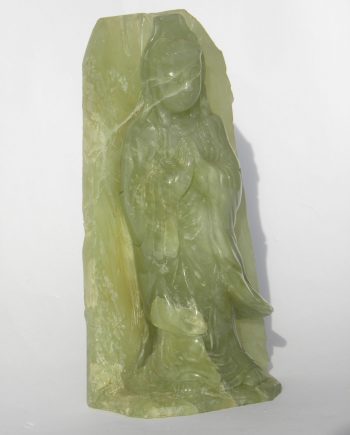Description
Somerset Alabaster/Gypsum (calcium sulphate) 20cm 1997gm
This large specimen of fine grained Somerset Alabaster is a delightful salmon pink colour, and has come from Blue Anchor Bay, Somerset. This is an extra large piece and weighs a fraction under 2 kilos and is 20cm at its widest point. Alabaster is a crystalline and also a translucent form of Gypsum. (a hydrous sulphate of calcium) It is classified as an evaporite mineral, formed millions of years ago. It was formed by the evaporation of lakes, leaving the gypsum behind to solidify, much like salt in salt pans. The nodular pink gypsum or alabaster comes from the green and grey mudstone at the eastern end of Blue Anchor Bay. The gypsum from Blue Anchor Bay has always been highly sought after by sculptors. Because of its fine grains the gypsum is easy to polish, and it is also a softer and more workable alternative to marble.
Alabaster gets its name from the Greek word ‘alabaster’s‘. The ancient Greeks and Romans regarded this as an important mineral for carving and making storage and also drinking vessels. When cut in thin sheets, alabaster is sufficiently translucent enough to let the light through. These days the largest workable deposits of Alabaster are in the Ebro Valley in Aragon, Spain.
Return to Crystals and Minerals Return To Minerals A-Z









